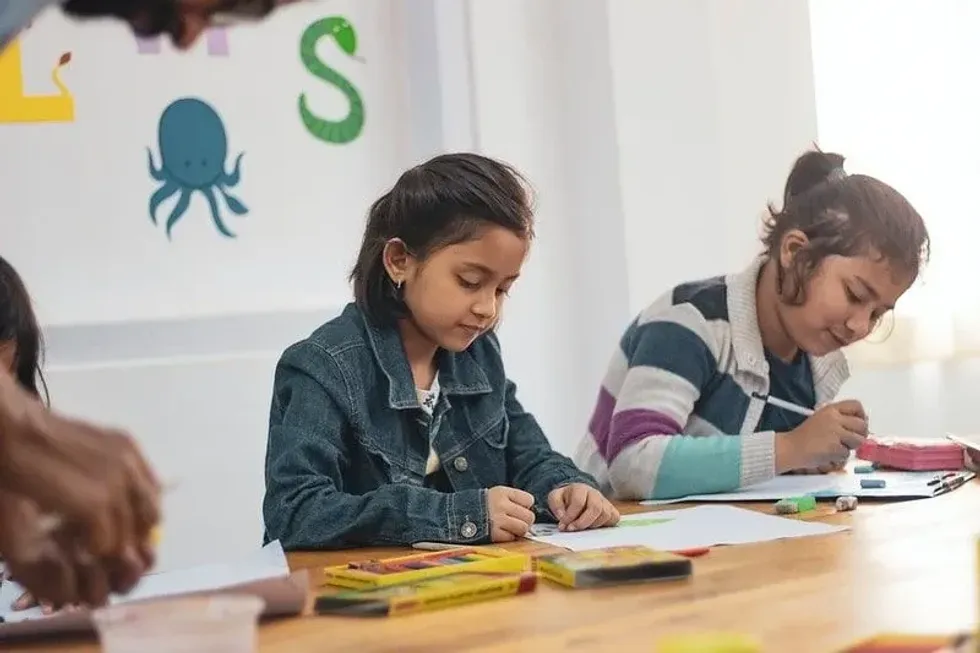Image © Pexels.
Kids in Year 5 will learn all about human life cycles at school, and will be fascinated to discover the ways in which the human body changes over time. Science at school can be tricky, so why not help your KS2 child learn all about the life cycle of a human with this great guide for parents?
Take a look at this guide to the human life cycle for a clear outline of the stages of human development, in addition to some exciting activities and fun facts that any child will love.
Stages In The Human Life Cycle
1.Foetus
The foetus is formed when sperm from the father fertilises an egg from the mother. It is a bundle of cells at first, and grows inside the mother's womb.
After eight weeks it begins to look like a very small person. The foetus is completely dependent on the mother as it grows inside the womb, and it gets its nutrients from the food eaten by the mother.
2.Baby

Image © Unsplash
Around 9 months after the foetus has been created in the womb, a baby is born. Babies develop quickly, and they can smile, swallow and breathe.
Babies learn to talk when they are about one year old. Before this, their main method of communication is crying. By the age of about two years old, a baby is likely to have taken their first steps, which helps to develop their muscles.
Did You Know: Babies are born with about 300 bones! As children and adults grow many of these small bones fuse together, and most adults end up with 206 bones in their body.
3.Childhood
A baby enters the earliest stage of childhood at the age of 3, and can usually walk and talk by this point. By the time children are 5 years old, they can usually speak in sentences, and they learn how to communicate and form friendships with other children.
During middle childhood, from the age of about 6, children begin learning things at school, including the alphabet and counting, and they start to participate in activities like sports and art. Broadly speaking, childhood lasts until the age of 12.
4.Adolescence
Adolescence starts at the age of 13. This is the stage in human development where children begin to develop into adults.
Adolescents go through many new changes to their bodies, and these changes are known as puberty. Some examples of puberty include boys' voices getting deeper and more hair growing on the body. This stage of development usually lasts until the person is about 19 years old.
5.Adulthood

Image © Pexels
Adulthood begins at about 20 years old. This stage in the human life cycle is usually the longest, and lasts until about 65 years of age.
Adults are fully mature humans, and the physical qualities developed during previous life stages are fully complete. This means adults usually have stronger muscles and senses (such as smell, taste and touch) than humans at other stages of development.
Adults often reproduce, starting the life cycle once more. As adults reach the middle of this life cycle stage, at the age of about 40, some of these qualities start to slowly decline.
6.Old Age
Old age is the last stage of all the stages of human life. During this stage, the physical attributes that were fully developed when the person was an adult, such as senses and the strength of bones, begin to decline more rapidly than they did during middle age.
Hair often turns white or grey because the cells that make hair its colour during the earlier life stages die. This life stage ends in death, and the average life expectancy in the UK is about 81 years.
Top Tip: Why not suggest your child creates their very own diagram of the life cycle using pictures to describe each stage? This creative activity will engage your child in their learning, and is fun, too!

Image © Pexels
Fun Facts For Kids About The Human Life Cycle
1.Babies and children can laugh up to 300 times every day!
2.The human brain is fully developed by the age of 18, near the end of adolescence. An adult brain weighs about 1.5kg.
3.Human ears and noses carry on growing throughout their lives.
4.Babies grow teeth during their first years of life, and by childhood humans usually have 20 teeth. Between the ages of 6 and 12, humans lose these baby teeth and they are replaced with adult teeth. Most adults have 32 teeth.
5.Adults usually blink around 10 times every 60 seconds, while babies only blink about twice every 60 seconds.
6.Babies weigh about 3.5kg when they are born, while the average adult weighs 62kg.
7.By the age of 3, a human can already say around 1,000 different words.
8.Humans going through puberty will often experience growth spurts, where they quickly grow a lot in a short space of time.
9.A fully developed adult stomach can expand to hold almost a litre of food. The human stomach develops and gets bigger over time. It starts off being able to hold only about 6ml on the first day after birth.
10.Human bones are at their heaviest when a person is an adult in their mid-30s.











